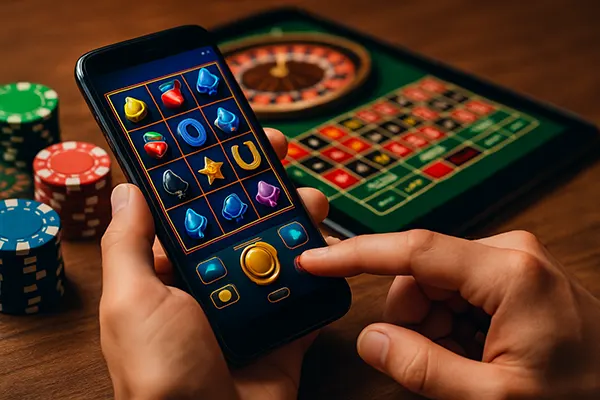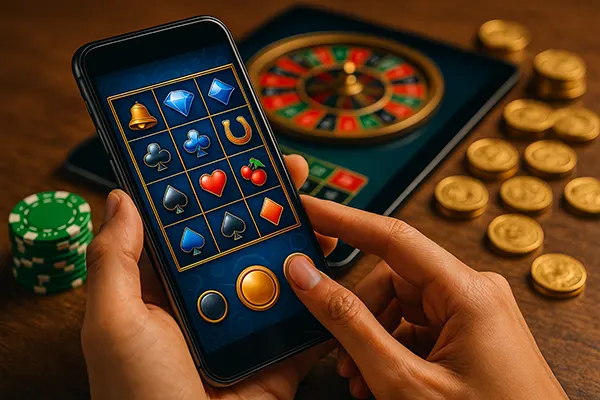
Mobile Casinos: How UX Design Shapes Gameplay and Player Decisions
Mobile gambling has evolved into a dominant force in the online gaming industry, with user experience (UX) design playing a central role in shaping how players interact with games. The convenience of mobile access, combined with intuitive interfaces and responsive designs, has transformed not only the aesthetic aspect but also the psychology of gaming behaviour. This article delves into the influence of UX on gameplay speed, decision-making, and betting patterns, based on real-world trends and examples observed in June 2025.
Core UX Elements and Their Impact on Player Behaviour
Modern mobile casino interfaces are built for immediacy. Larger buttons are not just visually comfortable—they’re engineered for fast interactions. These design choices encourage players to place bets more quickly and with less hesitation. When combined with tactile feedback and seamless animations, every action feels both satisfying and frictionless, creating a rhythm that fuels continued play.
Autospin functions, frequently located centrally or thumb-accessible, are another design element that alters player pacing. With minimal input, players can engage in extended sessions, often underestimating the total amount wagered due to the repetitive and almost hypnotic nature of autoplay. This feature effectively lowers the perceived risk by automating what was once a deliberate act.
Swipe and scroll-based navigation, instead of traditional button clicks, introduces a more fluid experience. These gestures mirror those used in everyday apps, reducing cognitive load and making games feel like a natural extension of the smartphone environment. As a result, users are more inclined to stay longer, explore more games, and engage with promotions or in-game purchases.
Design Triggers That Drive Impulsive Gaming Decisions
Simple, decluttered interfaces often lead to more impulsive gameplay. When users are presented with clean visuals and straightforward choices, their decision-making becomes faster and less analytical. This is particularly relevant in mobile formats, where screen space is limited and clarity is paramount.
Animations and reward feedback, such as coin showers or celebration flashes after wins, further nudge emotional responses. These cues are often used to build anticipation and can push users to continue betting in pursuit of the next “hit.” The strategic use of colour and motion creates a rewarding loop that keeps engagement levels high.
Moreover, in-app notifications and promotional pop-ups are timed precisely to re-engage users who may be exiting the session. These triggers are often contextual—offering free spins or cashback during losses or pauses—to encourage re-entry into the gaming loop.
How Mobile UI Changes Betting Patterns and Risk Assessment
The shift from desktop to mobile has redefined betting behaviour. Mobile UIs often remove or simplify detailed statistics, focusing instead on preset bet amounts and fast access to spin/start buttons. This compression of choice can increase betting frequency, as fewer steps are required to place a wager.
Additionally, the ergonomics of mobile use—playing with one hand, in transit or casually—fosters a more spontaneous style of gaming. The ease of input makes smaller, repeated bets more likely, which can lead to higher cumulative wagering over time compared to more calculated desktop sessions.
Games now frequently feature betting sliders and quick-select chips. These elements reduce time spent on each decision, nudging users toward default or mid-tier bets. When aligned with persuasive design (e.g. highlighting the “most popular” bet), these choices shape user habits and raise average bet values.
Risk Perception in Mobile Versus Desktop Environments
In a desktop environment, players often take more time to analyse odds, read paytables, or explore game mechanics. In contrast, mobile interfaces are built for immediacy, minimising on-screen information in favour of visual cues and quick access buttons. This difference reduces players’ perceived control over outcomes.
Moreover, touch-based controls disconnect players slightly from the monetary aspect of their decisions. Tapping to bet can feel less tangible than clicking a mouse or typing in values. Over time, this shift can dull the player’s sense of financial consequence and contribute to riskier behaviour.
Operators are increasingly integrating UX-based nudges such as default stake preselection, where games launch with moderate-to-high stakes already chosen. Unless the player actively reduces the stake, they are likely to begin at a higher level than intended. This psychological framing can affect loss tolerance and game longevity.

UX Strategies of Leading Providers: Case Examples
In 2025, top software providers like Evolution, Pragmatic Play, and NetEnt are tailoring their mobile-first designs to reinforce engagement. Evolution’s live games now feature vertical modes optimised for one-handed play, complete with floating menus and thumb-positioned betting panels for quicker decision-making.
Pragmatic Play has implemented dynamic scaling for buttons and interactive zones depending on device size and orientation. This ensures that core actions like spinning or adjusting bets are always within easy reach, minimising user fatigue and extending session durations.
NetEnt’s recent slot releases include gesture-driven bonus rounds, where swiping and tapping are central to the experience. These designs not only make gameplay more immersive but also amplify the sense of control and responsiveness. Their UI choices reflect data-driven refinement, focusing on boosting session stickiness and repeat play frequency.
Design as a Competitive Edge in Mobile Gambling
The role of design has shifted from aesthetics to strategy. Providers that invest in frictionless, responsive, and intuitive UX enjoy higher retention rates. A good example is the rise in usage of full-screen portrait games, which dominate the screen and remove external distractions, helping players stay in the game loop longer.
Mobile-exclusive features like thumb menus, quick re-bet options, and floating win trackers are not just conveniences—they are performance tools designed to optimise user flow. These enhancements enable seamless gameplay even in short bursts, such as during commutes or breaks.
UX is now a measurable factor in KPIs like lifetime value (LTV), session length, and churn rate. Studios prioritising micro-interactions and ergonomic layouts are gaining a tangible edge in the highly competitive mobile gambling market, where attention is currency and every second counts.
